They don't make rock stars like Josh Homme anymore. Frankly, they never did.
A one-of-a-kind songwriter, producer and performer with a style all his own, the Queens of the Stone Age frontman has been a dominant force in the world of rock'n'roll ever since he emerged on the scene with California desert-bred, detuned Black Sabbath disciples Kyuss as a teenager.
Since then, he's gone on to change modern rock as many know and love it, inspiring countless bands (including the Arctic Monkeys, upcoming North American tourmates Royal Blood, the Foo Fighters and more) along the way.
Before Queens of the Stone Age's seventh studio album Villains arrives on August 25 via Matador Records, we decided to look back at his vast, daunting discography. Below, enjoy Exclaim!'s Essential Guide to Queens of the Stone Age's Josh Homme.
Essential Albums:
6. Queens of the Stone Age
…Like Clockwork
(2013)
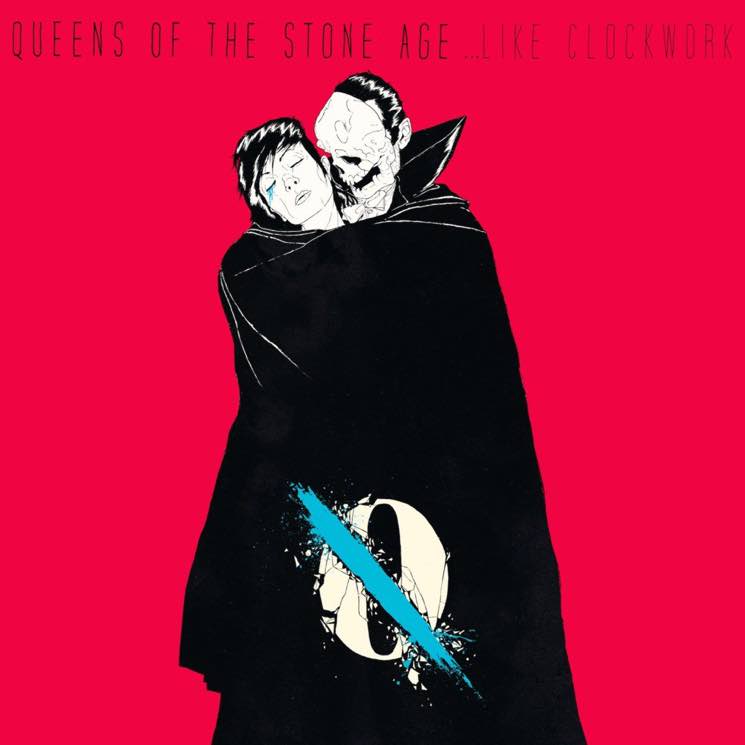
Back in 2011, Homme was hospitalized for 13 days after a routine knee surgery went wrong; he almost died. Bedridden for four months, he sank into a deep depression. "I would never say, 'I'm probably not gonna make it out of here,"' he told The Guardian in 2013, "but back then, I would definitely think it."
That experience informs almost every aspect of QOTSA's dark and foreboding sixth studio album, a record that finds the once cavalier frontman confronting his own mortality and loneliness ("The Vampyre of Time and Memory," "Fairweather Friends" and "I Appear Missing").
In some ways, the album — one of the band's most accessible — is a return to their glory days (Songs for the Deaf drummer and modern rock god Dave Grohl took over the skins after Joey Castillo departed the process a third of the way through, while ousted bassist/singer Nick Oliveri makes an appearance on "If I Had a Tail"), but it's also a big step forward, both sonically and emotionally, for the band. It's the first album to feature keyboardist and occasional guitarist Dean Fertita and bassist Michael Shuman (both of whom joined during the 2007 tour in support of Era Vulgaris), and their dense soundscapes and melodic riffing in the low end allow Homme and guitarist Troy Van Leeuwen to be a bit more nimble with their playing.
In a 2013 interview with Spin, Homme said Matador Records founder Chris Lombardi called …Like Clockwork the start of "Act Two" of QOTSA, and, as time will surely prove, he's right.
5. Kyuss
Welcome to Sky Valley
(1994)
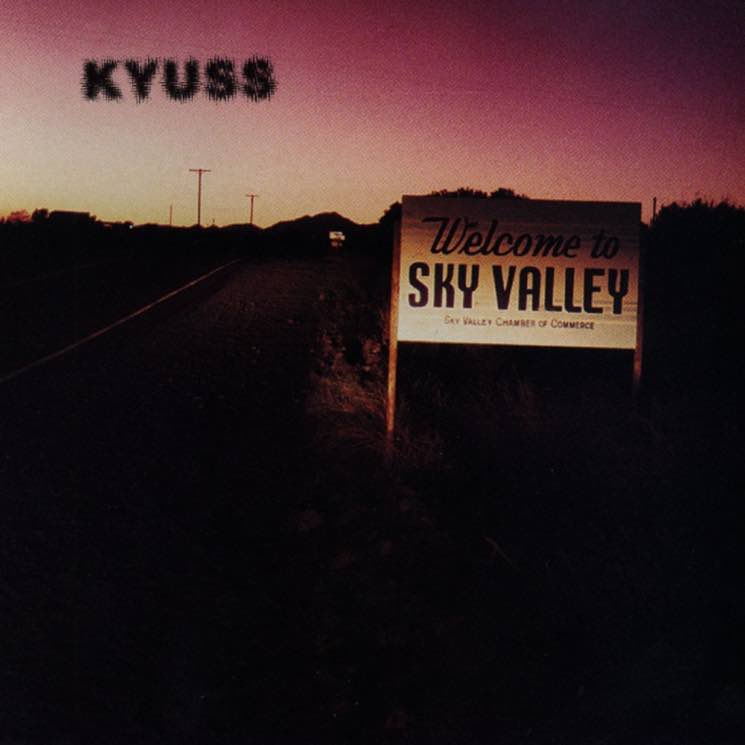
Often described as one of, if not the greatest stoner rock album of all time, Welcome to Sky Valley was nearly universally lauded by critics upon its release in 1994 after many label delays.
A lot of that is thanks to Homme's almost singular vision; with Oliveri leaving the band in 1992, and longtime member Brant Bjork calling it quits not long after the album's release, it was up to Homme — just 19 years old during the time of its recording — to carry the bulk of the songwriting duties. The result is a classic record that recalls Led Zeppelin at their softest and more dynamic ("Space Cadet") and Black Sabbath at their most psychedelic, weighty and unrelenting ("Supa Scoopa and Mighty Scoop," "Asteroid"). Sadly, it was a sound the band couldn't keep up. (The next year's ...And the Circus Leaves Town would be their final album together.)
"By the end, Kyuss felt restrictive," Homme recalled in a 2011 interview. "I'd lived my whole life in Kyuss since I was a boy, and we had all these rules that were based on what you couldn't do. And I wanted a new set of rules based on what you could."
It would be three more years before listeners got a full taste.
4. Queens of the Stone Age
Era Vulgaris
(2007)
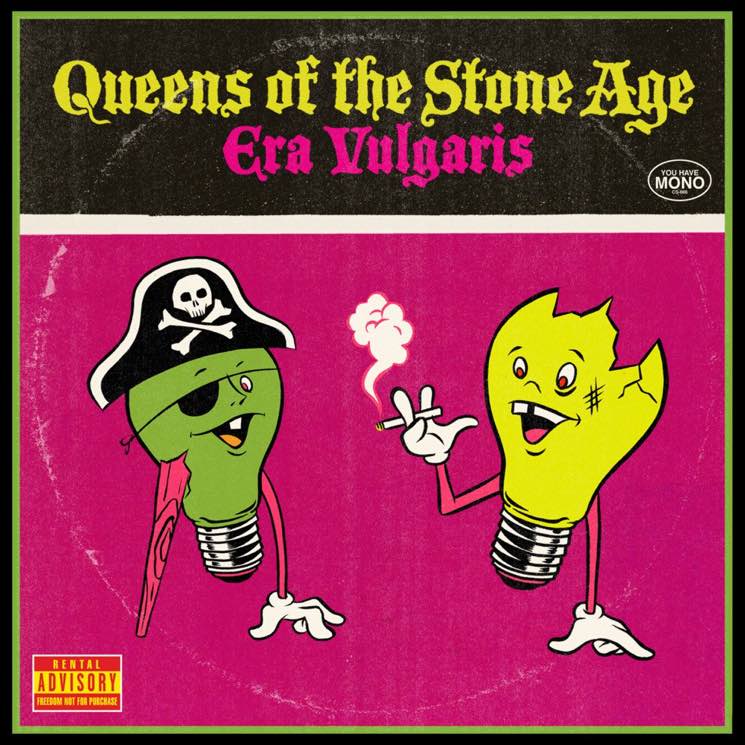
Perhaps QOTSA's most polarizing album to date, Era Vulgaris was the first album of theirs to take a major hit from critics. (Pitchfork gave it a 6.2 in an uneven review that hasn't aged well, while Entertainment Weekly scathingly said, "there isn't a single song here that you'll remember, or want to return to, two summers hence.")
The majority may have thought they were right at the time (it's a debate that pops up once in a while on Reddit), but in the past few years it's been reinterpreted as one of the band's better albums, sporting some of their best singles (the relentless riffs of "Sick, Sick, Sick," the strangely tender "Make It wit Chu" and the whip-cracking chords of "3's & 7's"), as well as their most abrasive (album opener "Turnin' on the Screw" and "I'm Designer").
At the time, it was the band's hardest album to make, with Homme realizing he didn't have much to say during the writing process, leading him to take inspiration from the grotesquery of his surroundings during his daily drive to the studio through Hollywood.
"I find that the more modernized the world gets, the more confusing it gets," he said at the time. "Something that takes work and patience, is there room for that shit?"
It's a sentiment that holds weight now more than ever.
3. Queens of the Stone Age
Queens of the Stone Age
(1998)
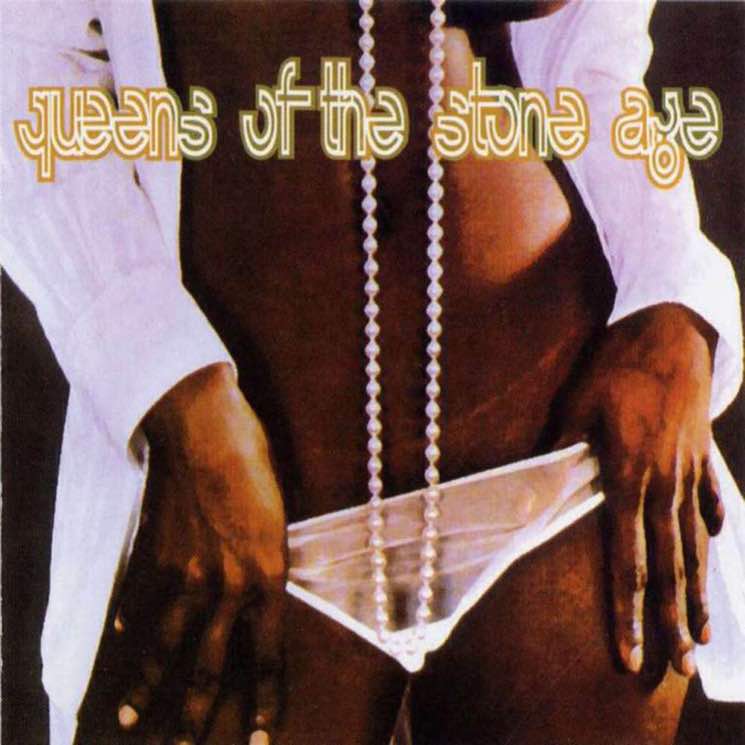
"I had an image in my head from an old Warner Bros. cartoon of big, staggering robots. And that, I suppose, was my idea for Queens of the Stone Age: broken, drunk robots," Homme told The Guardian in 2011.
QOTSA's debut album was the first sign of Homme finding steadier footing after the disillusionment and disbandment of Kyuss (and following a brief stint backing up future collaborator Mark Lanegan on tour in Screaming Trees). Co-produced by Joe Barresi (Melvins' 1997 album Honky, Fu Manchu's 1999 album King of the Road), Queens of the Stone Age had all the hallmarks of riff-rock's more weed-friendly records of the day. But underneath all the pulverizing instrumentation ("Avon," "How to Handle a Rope") was a high-minded artist changing the shape of hard rock.
"I remember thinking 'no-one's playing this trance rock music that you can dance to,' but that's primarily because I hadn't heard bands like Can," he said. That sonic ambition is evident on tracks like "Mexicola," "Walkin on the Sidewalks" and album opener "Regular John."
The album's end also offered a glimpse into the band's future. (In the final moments of "I Was a Teenage Hand Model," you can hear Oliveri leaving Homme a message on his answering machine where he agrees to join the band; the bassist would appear on the album's back cover even though he didn't record a single take on it.)
"I just wanted to start a band that within three seconds of listening, people knew what band it was," Homme told Under the Radar in 2011.
By their next album, QOTSA would be just that.
2. Queens of the Stone Age
Rated R
(2000)

It was QOTSA's sophomore album (and first for Interscope) that found them cementing their sound and status as the Easy Rider of rock'n'roll bands, as well as breaking them into the mainstream.
A lot of that has to do with second single (and album opener) "Feel Good Hit of the Summer," a song that found Homme reportedly recounting the cocktail of Class A-through-C drugs he ingested during a three-day party to help ring in the new millennium, the track being backed by nothing more than a throbbing bass line, plunking piano keys, steady drum fills and spastic guitar solo.
Due to the subject matter of the track (and others, like "Monsters in the Parasol"), many see this as the mecca of all drug albums. But it's more than that, touching on everything from privacy ("The Lost Art of Keeping a Secret"), modern psychology's relationship with the pharmaceutical industry ("Better Living Through Chemistry") and sobriety (the Lanegan-fronted "In the Fade"). It even included a gaggle of jazz musicians performing a round in 15/8 time during its final moments, meant to rouse listeners awake who may have fallen asleep while listening to the album in bed.
Rated R not only set the template for QOTSA, but future hard rock bands to follow.
1. Queens of the Stone Age
Songs for the Deaf
(2002)
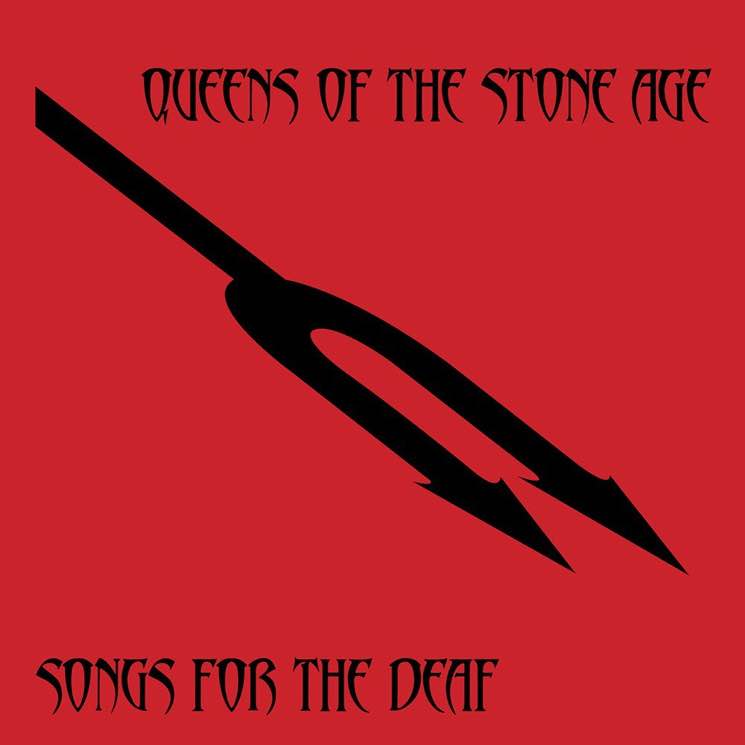
Homme's most cohesive album to date, Songs for the Deaf took listeners on a trip through the desert that helped birth his music, and put another knife in the back of nu metal in the process.
The band's closest thing to a concept album, Songs for the Deaf is loosely based on Homme's experiences driving from Los Angeles to Joshua Tree and the assortment of Spanish-language, death metal and pirate radio stations — not to mention evangelical preachers — he encountered over the airwaves along the way.
The album found Oliveri, Lanegan and Grohl in more defined roles, creating instant classics like "Go with the Flow" and "No One Knows" as well as flexing their muscles on tracks like "You Think I Ain't Worth a Dollar, But I Feel Like a Millionaire," "Hangin Tree" and "A Song for the Dead."
"I've always looked at our first three records as a set," Homme said at the time. "The first one was to distance ourselves from Kyuss, the second album fanned out the music into different areas and this one takes that out even a little further, I think."
It did, and they've never been the same since.
What to Avoid:

Over a nearly three-decade-long career, Homme has rarely had a misstep, but there are albums that, compared to his more interesting work, find him treading sonic territory that's a little too similar to other, better material to really be engaging.
The first is the 2009 debut album from Them Crooked Vultures, a supergroup comprised of Homme, Grohl and Led Zeppelin bassist-keyboardist John Paul Jones. Yes, it has major fans (especially for its lead single, "New Fang"), but despite its pedigree, the album doesn't sound that much different from QOTSA's more radio-friendly material. And at 72 minutes long, there's definitely some fat that could have been trimmed.
Then there's Lullabies to Paralyze. Again, QOTSA's 2005 album definitely has its fans, and the record even resulted in some killer singles — particularly "Little Sister" and the Billy Gibbons-assisted "Burn the Witch" — but it's hard not to hear this album, loaded with filler lyrics (especially "Everybody Knows That You Are Insane" and "In My Head") and one-and-done instrumentation (cowbell on the aforementioned "Little Sister," which has purposefully never been used by the band on record again) as Homme on autopilot. (He admitted as much in a 2007 interview, saying Oliveri's dismissal from the band and Songs for the Deaf's success messed with his mental state during the songwriting process.)
Finally, there's Kyuss's 1995 swan song, ...And the Circus Leaves Town. The band would break up three months after its release, not to anyone's surprise who cherished their first three albums: the spark just isn't there on their final LP.
Further Listening:

For the QOTSA fan who thinks they've heard it all, it's definitely worth a dip into The Desert Sessions, a ten-volume, five-album (or nine EPs, if you're a real crate-digger) collection of songs released between 1997 to 2004 that found Homme working with old friends (Dave Catching, Chris Goss and most members of QOTSA up to the mid-aughts) and familiar faces (PJ Harvey, Dean Ween). It's a little all over the place, but worth it for hardcore fans that want to hear the early stages of future hits like "Avon" and "Monsters in the Parasol" (Volume 3), "Hangin' Tree" (Volume 7) and "You Think I Ain't Worth a Dollar, But I Feel Like a Millionaire" (Volume 5).
For those looking to step even further back, try Kyuss's first two albums. Their debut, 1991's Wretch, certainly wears its Black Flag/Danzig influences on its sleeve, but still has its share of moments (and is pretty impressive, considering Homme was just 16 when they started recording). Next year's Blues for the Red Sun found the band hitting their stride, and is easily their most democratic in terms of the share of songwriting duties. With Oliveri still playing bass in the band, he and Homme deliver a heavy one-two punch on tracks like "Green Machine" and "50 Million Year Trip (Downside Up)" that fans would have to wait eight years to hear on record together again.
In a 2004 interview with MTV News discussing Eagles of Death Metal, the ongoing side-project between him and long-time friend Jesse Hughes, Homme said: "I just sit behind the drums and play rock and roll… J. Devil [Hughes] writes everything… I go through and arrange them, and I lay down harmonies, but it's really his thing." Twelve years later, that still sounds like the case: Hughes' larger-than-life persona and groovy falsetto is the dominant force in the band, making it hard to pinpoint Homme's hand in the songs (aside from his production work and aforementioned arranging).
Still, whether appreciated alone or alongside the rest of his canon, there's no denying tracks like "I Only Want You," "I Want You So Hard (Boy's Bad News)," "Heart On" and "Silverlake (K.S.O.F.M.)," especially if you still worship at the altar of rock'n'roll.
Finally, there's Homme's 2016 album with Iggy Pop, Post Pop Depression. There's a reason that the proto-punk pioneer and his backing band (featuring members of QOTSA, Chavez's Matt Sweeney and the Arctic Monkeys' Matt Helders) played that and tracks from 1977's The Idiot and Lust for Life while on tour; it's right up there with each of their best works, and definitely demands your attention.
A one-of-a-kind songwriter, producer and performer with a style all his own, the Queens of the Stone Age frontman has been a dominant force in the world of rock'n'roll ever since he emerged on the scene with California desert-bred, detuned Black Sabbath disciples Kyuss as a teenager.
Since then, he's gone on to change modern rock as many know and love it, inspiring countless bands (including the Arctic Monkeys, upcoming North American tourmates Royal Blood, the Foo Fighters and more) along the way.
Before Queens of the Stone Age's seventh studio album Villains arrives on August 25 via Matador Records, we decided to look back at his vast, daunting discography. Below, enjoy Exclaim!'s Essential Guide to Queens of the Stone Age's Josh Homme.
Essential Albums:
6. Queens of the Stone Age
…Like Clockwork
(2013)

Back in 2011, Homme was hospitalized for 13 days after a routine knee surgery went wrong; he almost died. Bedridden for four months, he sank into a deep depression. "I would never say, 'I'm probably not gonna make it out of here,"' he told The Guardian in 2013, "but back then, I would definitely think it."
That experience informs almost every aspect of QOTSA's dark and foreboding sixth studio album, a record that finds the once cavalier frontman confronting his own mortality and loneliness ("The Vampyre of Time and Memory," "Fairweather Friends" and "I Appear Missing").
In some ways, the album — one of the band's most accessible — is a return to their glory days (Songs for the Deaf drummer and modern rock god Dave Grohl took over the skins after Joey Castillo departed the process a third of the way through, while ousted bassist/singer Nick Oliveri makes an appearance on "If I Had a Tail"), but it's also a big step forward, both sonically and emotionally, for the band. It's the first album to feature keyboardist and occasional guitarist Dean Fertita and bassist Michael Shuman (both of whom joined during the 2007 tour in support of Era Vulgaris), and their dense soundscapes and melodic riffing in the low end allow Homme and guitarist Troy Van Leeuwen to be a bit more nimble with their playing.
In a 2013 interview with Spin, Homme said Matador Records founder Chris Lombardi called …Like Clockwork the start of "Act Two" of QOTSA, and, as time will surely prove, he's right.
5. Kyuss
Welcome to Sky Valley
(1994)

Often described as one of, if not the greatest stoner rock album of all time, Welcome to Sky Valley was nearly universally lauded by critics upon its release in 1994 after many label delays.
A lot of that is thanks to Homme's almost singular vision; with Oliveri leaving the band in 1992, and longtime member Brant Bjork calling it quits not long after the album's release, it was up to Homme — just 19 years old during the time of its recording — to carry the bulk of the songwriting duties. The result is a classic record that recalls Led Zeppelin at their softest and more dynamic ("Space Cadet") and Black Sabbath at their most psychedelic, weighty and unrelenting ("Supa Scoopa and Mighty Scoop," "Asteroid"). Sadly, it was a sound the band couldn't keep up. (The next year's ...And the Circus Leaves Town would be their final album together.)
"By the end, Kyuss felt restrictive," Homme recalled in a 2011 interview. "I'd lived my whole life in Kyuss since I was a boy, and we had all these rules that were based on what you couldn't do. And I wanted a new set of rules based on what you could."
It would be three more years before listeners got a full taste.
4. Queens of the Stone Age
Era Vulgaris
(2007)

Perhaps QOTSA's most polarizing album to date, Era Vulgaris was the first album of theirs to take a major hit from critics. (Pitchfork gave it a 6.2 in an uneven review that hasn't aged well, while Entertainment Weekly scathingly said, "there isn't a single song here that you'll remember, or want to return to, two summers hence.")
The majority may have thought they were right at the time (it's a debate that pops up once in a while on Reddit), but in the past few years it's been reinterpreted as one of the band's better albums, sporting some of their best singles (the relentless riffs of "Sick, Sick, Sick," the strangely tender "Make It wit Chu" and the whip-cracking chords of "3's & 7's"), as well as their most abrasive (album opener "Turnin' on the Screw" and "I'm Designer").
At the time, it was the band's hardest album to make, with Homme realizing he didn't have much to say during the writing process, leading him to take inspiration from the grotesquery of his surroundings during his daily drive to the studio through Hollywood.
"I find that the more modernized the world gets, the more confusing it gets," he said at the time. "Something that takes work and patience, is there room for that shit?"
It's a sentiment that holds weight now more than ever.
3. Queens of the Stone Age
Queens of the Stone Age
(1998)

"I had an image in my head from an old Warner Bros. cartoon of big, staggering robots. And that, I suppose, was my idea for Queens of the Stone Age: broken, drunk robots," Homme told The Guardian in 2011.
QOTSA's debut album was the first sign of Homme finding steadier footing after the disillusionment and disbandment of Kyuss (and following a brief stint backing up future collaborator Mark Lanegan on tour in Screaming Trees). Co-produced by Joe Barresi (Melvins' 1997 album Honky, Fu Manchu's 1999 album King of the Road), Queens of the Stone Age had all the hallmarks of riff-rock's more weed-friendly records of the day. But underneath all the pulverizing instrumentation ("Avon," "How to Handle a Rope") was a high-minded artist changing the shape of hard rock.
"I remember thinking 'no-one's playing this trance rock music that you can dance to,' but that's primarily because I hadn't heard bands like Can," he said. That sonic ambition is evident on tracks like "Mexicola," "Walkin on the Sidewalks" and album opener "Regular John."
The album's end also offered a glimpse into the band's future. (In the final moments of "I Was a Teenage Hand Model," you can hear Oliveri leaving Homme a message on his answering machine where he agrees to join the band; the bassist would appear on the album's back cover even though he didn't record a single take on it.)
"I just wanted to start a band that within three seconds of listening, people knew what band it was," Homme told Under the Radar in 2011.
By their next album, QOTSA would be just that.
2. Queens of the Stone Age
Rated R
(2000)

It was QOTSA's sophomore album (and first for Interscope) that found them cementing their sound and status as the Easy Rider of rock'n'roll bands, as well as breaking them into the mainstream.
A lot of that has to do with second single (and album opener) "Feel Good Hit of the Summer," a song that found Homme reportedly recounting the cocktail of Class A-through-C drugs he ingested during a three-day party to help ring in the new millennium, the track being backed by nothing more than a throbbing bass line, plunking piano keys, steady drum fills and spastic guitar solo.
Due to the subject matter of the track (and others, like "Monsters in the Parasol"), many see this as the mecca of all drug albums. But it's more than that, touching on everything from privacy ("The Lost Art of Keeping a Secret"), modern psychology's relationship with the pharmaceutical industry ("Better Living Through Chemistry") and sobriety (the Lanegan-fronted "In the Fade"). It even included a gaggle of jazz musicians performing a round in 15/8 time during its final moments, meant to rouse listeners awake who may have fallen asleep while listening to the album in bed.
Rated R not only set the template for QOTSA, but future hard rock bands to follow.
1. Queens of the Stone Age
Songs for the Deaf
(2002)

Homme's most cohesive album to date, Songs for the Deaf took listeners on a trip through the desert that helped birth his music, and put another knife in the back of nu metal in the process.
The band's closest thing to a concept album, Songs for the Deaf is loosely based on Homme's experiences driving from Los Angeles to Joshua Tree and the assortment of Spanish-language, death metal and pirate radio stations — not to mention evangelical preachers — he encountered over the airwaves along the way.
The album found Oliveri, Lanegan and Grohl in more defined roles, creating instant classics like "Go with the Flow" and "No One Knows" as well as flexing their muscles on tracks like "You Think I Ain't Worth a Dollar, But I Feel Like a Millionaire," "Hangin Tree" and "A Song for the Dead."
"I've always looked at our first three records as a set," Homme said at the time. "The first one was to distance ourselves from Kyuss, the second album fanned out the music into different areas and this one takes that out even a little further, I think."
It did, and they've never been the same since.
What to Avoid:

Over a nearly three-decade-long career, Homme has rarely had a misstep, but there are albums that, compared to his more interesting work, find him treading sonic territory that's a little too similar to other, better material to really be engaging.
The first is the 2009 debut album from Them Crooked Vultures, a supergroup comprised of Homme, Grohl and Led Zeppelin bassist-keyboardist John Paul Jones. Yes, it has major fans (especially for its lead single, "New Fang"), but despite its pedigree, the album doesn't sound that much different from QOTSA's more radio-friendly material. And at 72 minutes long, there's definitely some fat that could have been trimmed.
Then there's Lullabies to Paralyze. Again, QOTSA's 2005 album definitely has its fans, and the record even resulted in some killer singles — particularly "Little Sister" and the Billy Gibbons-assisted "Burn the Witch" — but it's hard not to hear this album, loaded with filler lyrics (especially "Everybody Knows That You Are Insane" and "In My Head") and one-and-done instrumentation (cowbell on the aforementioned "Little Sister," which has purposefully never been used by the band on record again) as Homme on autopilot. (He admitted as much in a 2007 interview, saying Oliveri's dismissal from the band and Songs for the Deaf's success messed with his mental state during the songwriting process.)
Finally, there's Kyuss's 1995 swan song, ...And the Circus Leaves Town. The band would break up three months after its release, not to anyone's surprise who cherished their first three albums: the spark just isn't there on their final LP.
Further Listening:

For the QOTSA fan who thinks they've heard it all, it's definitely worth a dip into The Desert Sessions, a ten-volume, five-album (or nine EPs, if you're a real crate-digger) collection of songs released between 1997 to 2004 that found Homme working with old friends (Dave Catching, Chris Goss and most members of QOTSA up to the mid-aughts) and familiar faces (PJ Harvey, Dean Ween). It's a little all over the place, but worth it for hardcore fans that want to hear the early stages of future hits like "Avon" and "Monsters in the Parasol" (Volume 3), "Hangin' Tree" (Volume 7) and "You Think I Ain't Worth a Dollar, But I Feel Like a Millionaire" (Volume 5).
For those looking to step even further back, try Kyuss's first two albums. Their debut, 1991's Wretch, certainly wears its Black Flag/Danzig influences on its sleeve, but still has its share of moments (and is pretty impressive, considering Homme was just 16 when they started recording). Next year's Blues for the Red Sun found the band hitting their stride, and is easily their most democratic in terms of the share of songwriting duties. With Oliveri still playing bass in the band, he and Homme deliver a heavy one-two punch on tracks like "Green Machine" and "50 Million Year Trip (Downside Up)" that fans would have to wait eight years to hear on record together again.
In a 2004 interview with MTV News discussing Eagles of Death Metal, the ongoing side-project between him and long-time friend Jesse Hughes, Homme said: "I just sit behind the drums and play rock and roll… J. Devil [Hughes] writes everything… I go through and arrange them, and I lay down harmonies, but it's really his thing." Twelve years later, that still sounds like the case: Hughes' larger-than-life persona and groovy falsetto is the dominant force in the band, making it hard to pinpoint Homme's hand in the songs (aside from his production work and aforementioned arranging).
Still, whether appreciated alone or alongside the rest of his canon, there's no denying tracks like "I Only Want You," "I Want You So Hard (Boy's Bad News)," "Heart On" and "Silverlake (K.S.O.F.M.)," especially if you still worship at the altar of rock'n'roll.
Finally, there's Homme's 2016 album with Iggy Pop, Post Pop Depression. There's a reason that the proto-punk pioneer and his backing band (featuring members of QOTSA, Chavez's Matt Sweeney and the Arctic Monkeys' Matt Helders) played that and tracks from 1977's The Idiot and Lust for Life while on tour; it's right up there with each of their best works, and definitely demands your attention.




